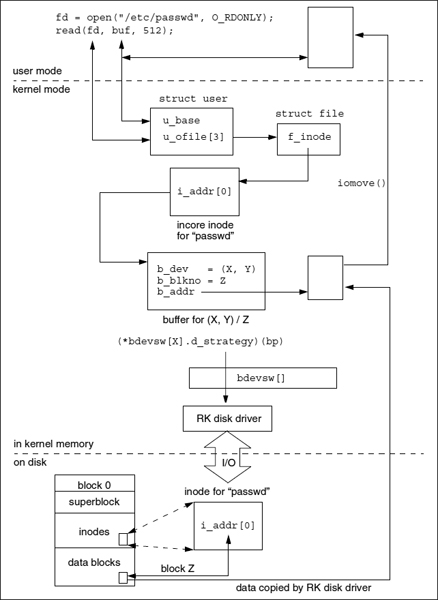Putting It All Together
In order to describe how all of the above subsystems work together, this section will follow a call to open() on /etc/passwd followed by the read() and close() system calls.
Figure 6.4 shows the main structures involved in actually performing the read. It is useful to have this figure in mind while reading through the following sections.

Figure 6.4 Kernel structures used when reading from a file.
Opening a File
The open() system call is handled by the open() kernel function. Its first task is to call namei() to resolve the pathname passed to open(). Assuming the pathname is valid, the inode for passwd is returned. A call to open1() is then made passing the open mode. The split between open() and open1() allows the open() and creat() system calls to share much of the same code.
First of all, open1() must call access() to ensure that the process can access the file according to ownership and the mode passed to open(). If all is fine, a call to falloc() is made to allocate a file table entry. Internally this invokes ufalloc() to allocate a file descriptor from u_ofile[]. The newly allocated file descriptor will be set to point to the newly allocated file table entry. Before returning from open1(), the linkage between the file table entry and the inode for passwd is established as was shown in Figure 6.3.
Reading the File
The read() and write() systems calls ...
Get UNIX Filesystems: Evolution, Design, and Implementation now with the O’Reilly learning platform.
O’Reilly members experience books, live events, courses curated by job role, and more from O’Reilly and nearly 200 top publishers.

